| Date | Text | |
|---|---|---|
30 Nov 1939

element |
element (chemistry) The radioactive element Astatine is synthesized by Dale R. Corson, Kenneth Ross MacKenzie and Emilio Segrè at the University of California, Berkeley. |
|
30 Nov 1939
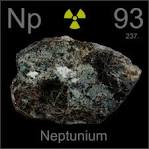
Neptunium |
Neptunium (chemistry) Neptunium, the first transuranic element, is synthesized by Edwin McMillan and Philip H. Abelson at the University of California, Berkeley. |
|
30 Nov 1939

Louis Plack Hammett |
Louis Plack Hammett (chemistry) Louis Plack Hammett coins the term Physical organic chemistry when he uses it as the title of a textbook published in New York. |
|
30 Nov 1939

Robert McCance |
Robert McCance (chemistry) Robert McCance and Elsie Widdowson publish the standard text The Chemical Composition of Foods. |
|
30 Nov 1939

Johns Hopkins Hospital |
Johns Hopkins Hospital (medicine) At Johns Hopkins Hospital in the United States, Dr. Austin T. Moore (1899–1963) performs the first metallic hip replacement surgery. |
|
30 Nov 1939
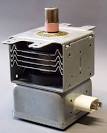
Magnetron |
Magnetron (physics) Cavity Magnetron invented by John Randall and Harry Boot. |
|
30 Nov 1939

Spontaneous fission |
Spontaneous fission (physics) Spontaneous fission was first observed by Georgy Flyorov and Konstantin Petrzhak. |
|
30 Nov 1939
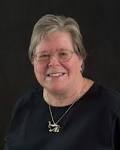
Judith Pipher |
birth Judith Pipher Judith Pipher, American astrophysicist. |
|
05 Jan 1940
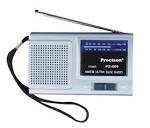
FM radio |
FM radio (physics) FM radio demonstrated to the FCC for the first time. |
|
08 Jan 1940

history of computing hardware |
history of computing hardware (computer science) In the history of computing hardware, Bell Labs' Complex Number Calculator, a relay-based calculator for complex numbers, is completed under the direction of George Stibitz. |
|
02 Feb 1940
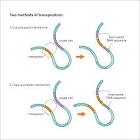
transposons |
transposons (biology) The first transposons are discovered in maize (Zea mays, aka corn) by Barbara McClintock. |
|
27 Feb 1940
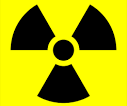
radioactive |
radioactive (chemistry) The radioactive isotope carbon-14 is discovered by Martin Kamen and Sam Ruben at the University of California, Berkeley. |
|
01 Mar 1940

Frisch–Peierls memorandum |
Frisch–Peierls memorandum (physics) Frisch–Peierls memorandum: Otto Frisch and Rudolf Peierls, at this time working at the University of Birmingham in England, calculate that an atomic bomb could be produced using very much less enriched uranium than has previously been supposed, making it a practical proposition. |
|
09 Mar 1940
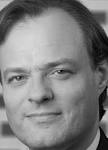
Robert Gunther |
death Robert Gunther Robert Gunther (born 1869), English historian of science. |
|
01 Apr 1940

Wangari Muta Mary Jo Maathai |
birth Wangari Muta Mary Jo Maathai Wangari Muta Mary Jo Maathai (died 2011), Kenyan biologist and winner of the Nobel Peace Prize. |
|
13 Apr 1940

Pierre Marie |
death Pierre Marie Died 13 Apr 1940 at age 86 (born 9 Sep 1853). French neurologist who made fundamental contributions to endocrinology. He trained at the Salpetriere under Jean Martin Charcot, and hia assistant. Marie developed an early interest in nervous diseases. His doctoral thesis was on Basedow's disease and its characteristic tremour in extended arms and fingers. In 1982 he published a series of lectures he had given on diseases of the spinal cord. He studied and was the first (1886-1891) to describe acromegaly, a form of gigantism of the extremities (Gr. akron, extremity; megas, large). Marie's discovery that growth disorders result from a disorder of the pituitary gland was a fundamental contribution to the emerging field of endocrinology. |
|
25 Apr 1940

Wilhelm Dörpfeld |
death Wilhelm Dörpfeld Died 25 Apr 1940 at age 86 (born 26 Dec 1853). German archaeologist who was the first to study the construction of ancient Greek theatres. He worked with Ernst Curtius as a member of the excavation team at the Olympia site in Greece (1877-81), where Dörpfeld developed the method of dating ancient archaeological sites based on the strata in which objects were found and the type of building materials. He excavated the Mycenaean palace at Tiryns, Greece (1884-85). He was an associate of the German archaeologist Heinrich Schliemann assisting in the search for the Harbour of Troy, at Hisarlik, Turkey (1882-83). Dörpfeld continued that work (1893-94) after Schliemann's death. |
|
01 May 1940
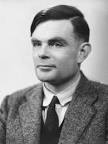
Alan Turing |
Alan Turing (computer science) August – Alan Turing and Gordon Welchman at the United Kingdom Government Code and Cypher School, Bletchley Park, design the British Bombes to help decrypt Wehrmacht Enigma machine signals. |
|
15 May 1940

Nylon stockings |
Nylon stockings In 1940, nylon stockings went on general sale for the first time in the United States in Wilmington, Delaware. Four million pairs were sold in several hours. |
|
15 May 1940

stockings |
stockings (chemistry) Women's stockings made of nylon are first placed on sale across the United States. |
|
26 May 1940
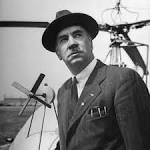
Igor Sikorsky |
Igor Sikorsky (technology) First free flight of Igor Sikorsky's Vought-Sikorsky VS-300 helicopter, in the United States. |
|
05 Jun 1940
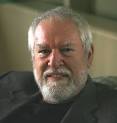
Dickson Despommier |
birth Dickson Despommier Dickson Despommier microbiologist, ecologist and Professor of Public Health in Environmental Health Sciences at Columbia University. |
|
22 Jun 1940
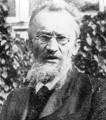
Wladimir Köppen |
death Wladimir Köppen Died 22 Jun 1940 at age 93 (born 25 Sep 1846). Wladimir (Peter) Köppen was a German meteorologist and climatologist best known for his delineation and mapping of the climatic regions of the world. He played a major role in the advancement of climatology and meteorology for more than 70 years. The climate classification system he developed remains popular because it uses easily obtained data (monthly mean temperatures and precipitation) and straightforward, objective criteria. He recognized five principal climate groups: (A) Humid tropical -winterless climates; (B) Dry - evaporation constantly exceed precipitation; (C) humid mid-latitude, mild winters; (D) humid mid-latitude, severe winters; and (E) Polar - summerless climates. |
|
22 Jun 1940

Daniel Quillen |
birth Daniel Quillen Daniel Quillen (died 2011), American mathematician. |
|
31 Jul 1940

Louis Charles Christopher Krieger |
death Louis Charles Christopher Krieger Louis Charles Christopher Krieger (born 1873), American mycologist. |
|
24 Aug 1940

Paul Gottlieb Nipkow |
death Paul Gottlieb Nipkow Died 24 Aug 1940 at age 80 (born 22 Aug 1860). German engineer who discovered television's scanning principle, in which the light intensities of small portions of an image are successively analyzed and transmitted. Nipkow's invented (1884) a rotating disk (Nipkow disk) with one or more spirals of apertures that passed successively across the picture to make a mechanically scanned television system. |
|
24 Aug 1940

Howard Florey |
Howard Florey (biochemistry) Howard Florey and a team including Ernst Chain, Arthur Duncan Gardner, Norman Heatley, M. Jennings, J. Orr-Ewing and G. Sanders at the Sir William Dunn School of Pathology, University of Oxford, publish their laboratory results showing the in vivo bactericidal action of penicillin. They have also purified the drug. |
|
29 Aug 1940

World War II cooperation |
World War II cooperation In 1940, Sir Henry Tizard led a mission of leading British and Canadian scientists to the USA to brief official American representatives on devices under active development for war use and to enlist the support of American scientists. Thus began a close cooperation of Anglo-American scientists in such fields as aeronautics and rocketry. His influence probably made the difference between defeat or victory at the Battle of Britain in 1940. |
|
01 Sep 1940

Tizard Mission |
Tizard Mission (other s) November – The Tizard Mission, a British technical and scientific mission, exchanges information on wartime scientific advances with the United States, including radar (in particular a greatly improved cavity magnetron), Frank Whittle's jet engine, the Frisch–Peierls memorandum on feasibility of an atomic bomb and work of the 'Tube Alloys' project on production of enriched uranium. |
|
04 Sep 1940

Hans Zinsser |
death Hans Zinsser Died 4 Sep 1940 at age 61 (born 17 Nov 1878). American bacteriologist and immunologist who was an international authority on typhus, the deadly disease for which he isolated the typhus germ (1936). By 1939 he had perfected a method to produce enough anti-typhus vaccine to protect a nation. He travelled abroad to study disease outbreaks: an typhus epidemic in Serbia (1915), cholera in the Soviet Union (1923), a prison typhus epidemic in Mexico (1931) and lectured in China (1938). He published over 160 scientific papers. The cause of typhus is Rickettsia organisms carried by a louse or a rat flea and transmitted to humans by a bite from the parasites, especially in areas of poor sanitation and overcrowding. He wrote his autobiography in the third person, As I Remember Him, while dying of leukemia. |
|
14 Sep 1940

Émile Argand |
death Émile Argand Died 14 Sep 1940 at age 61 (born 6 Jan 1879). Swiss geologist who studied the structure of the Alps. He produced a map of the Dent Blanche massif (1908) with a description of his investigation of the strata. In 1915, he coined the term embryotectonics for a new line of research which analyzed the sequential evolution of geological structures back to its origins as a sedimentary terrain. |
|
21 Sep 1940

American Bantam |
American Bantam (technology) American Bantam deliver the first prototype BRC Quarter-Ton General Purpose Vehicle – the four-wheel drive Jeep, designed by Karl Probst. |
|
26 Sep 1940

Louise Johnson |
birth Louise Johnson Louise Johnson (died 2012), British biochemist and protein crystallographer. |
|
30 Sep 1940
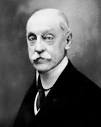
Sir Robert Abbott Hadfield |
death Sir Robert Abbott Hadfield Died 30 Sep 1940 at age 81 (born 28 Nov 1858). English metallurgist (Baronet) who developed manganese steel, an alloy of exceptional durability that found uses in the construction of railroad rails and rock-crushing machinery. Hadfield discovered manganese steel in 1882. It was hardened by quenching it in water from a temperature of a thousand degrees centigrade. The hard steel was to be used in the manufacture of tram wheels. He patented his work in 1883-4 but continued to carry out further experiments before publicising his findings in 1888, which were supported by a lecture tour. The first World War provided new markets for manganese steel: spur armour plate and shells, tank treads and soldier's helmets. By 1919, Hadfields Steel Foundry Co. Ltd. were Sheffield's biggest employers. |
|
11 Oct 1940

Vito Volterra |
death Vito Volterra Died 11 Oct 1940 at age 80 (born 3 May 1860). Italian mathematician who made important contributions to calculus, and mathematical theories in astronomy, elasticity and biometrics. His mathematical talent appeared as a young boy. In 1905, he began to develop the theory of dislocations in crystals that led to improved understanding of the behaviour of ductile materials. During WWI he established the Italian Office of War Inventions and designed weapons for use by airships, for which he proposed the use of helium instead of flammable hydrogen. He is remembered for achievements in function theory and differential equations. In biology, in 1925, he formulated a pair of differential equations relating populations of prey and predators (also independently proposed by Alfred J. Lotka in 1925). |
|
14 Oct 1940

Heinrich Kayser |
death Heinrich Kayser Died 14 Oct 1940 at age 87 (born 16 Mar 1853). Heinrich (Gustav Johannes) Kayser was a German physicist who discovered the presence of helium in the Earth's atmosphere. Prior to that scientists had detected helium only in the sun and in some minerals. Kayser's early research work was on the properties of sound. In collaboration with the physicist and mathematician Carl D.T. Runge, Kayser carefully mapped the spectra of a large number of elements. He wrote a handbook of spectroscopy (1901–12) and a treatise on the electron theory (1905). |
|
07 Nov 1940

Tacoma Narrows Bridge |
Tacoma Narrows Bridge (technology) The new Tacoma Narrows Bridge collapses due to aeroelastic flutter. |
|
08 Nov 1940
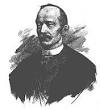
Arthur Vierendeel |
death Arthur Vierendeel Arthur Vierendeel (born 1852), Belgian civil engineer. |
|
17 Nov 1940
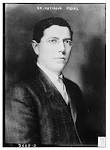
Raymond Pearl |
death Raymond Pearl Raymond Pearl (born 1879), American biologist. |
|
20 Nov 1940

Arieh Warshel |
birth Arieh Warshel Arieh Warshel, Israeli-born winner of the Nobel Prize in Chemistry. |
|
26 Nov 1940

Enrico Bombieri |
birth Enrico Bombieri Enrico Bombieri, Italian-born mathematician. |
|
01 Dec 1940
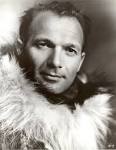
Finn Ronne |
Finn Ronne (exploration) Finn Ronne and Carl Eklund of the United States Antarctic Service determine that Alexander I Land is an island. |
|
14 Dec 1940
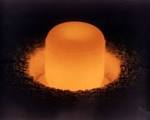
Plutonium |
Plutonium (chemistry) Plutonium is first synthesized by a team led by Glenn T. Seaborg and Edwin McMillan at the University of California, Berkeley by bombarding uranium-238 with deuterons. |
|
16 Dec 1940

Eugène Dubois |
death Eugène Dubois Eugène Dubois (born 1858), Dutch paleoanthropologist. |